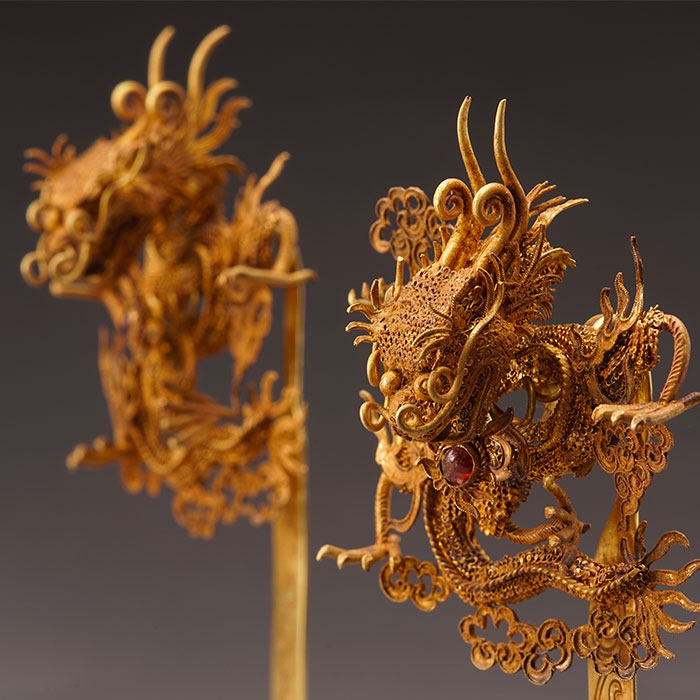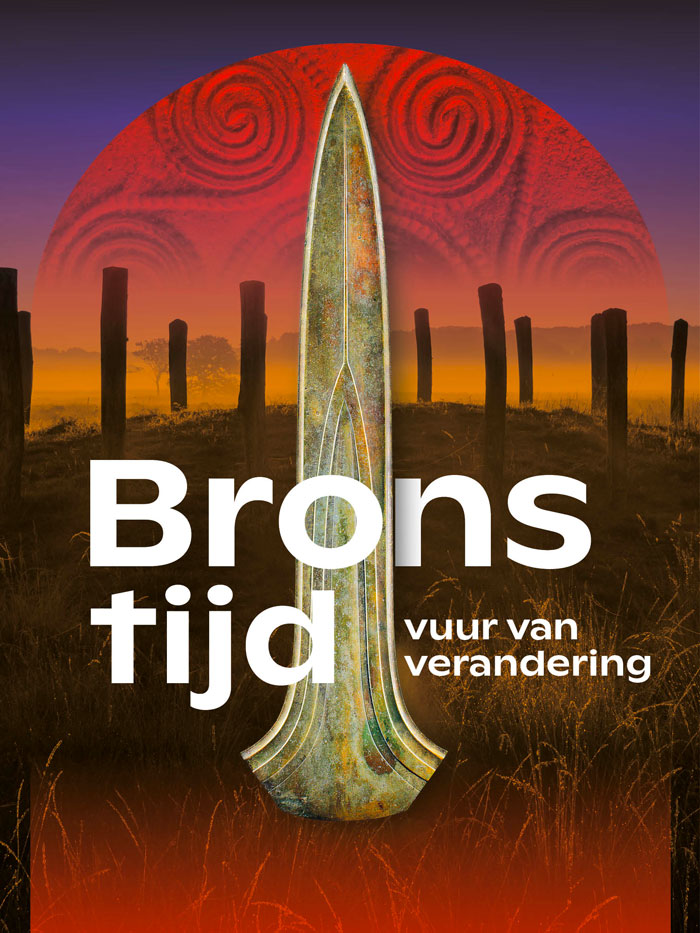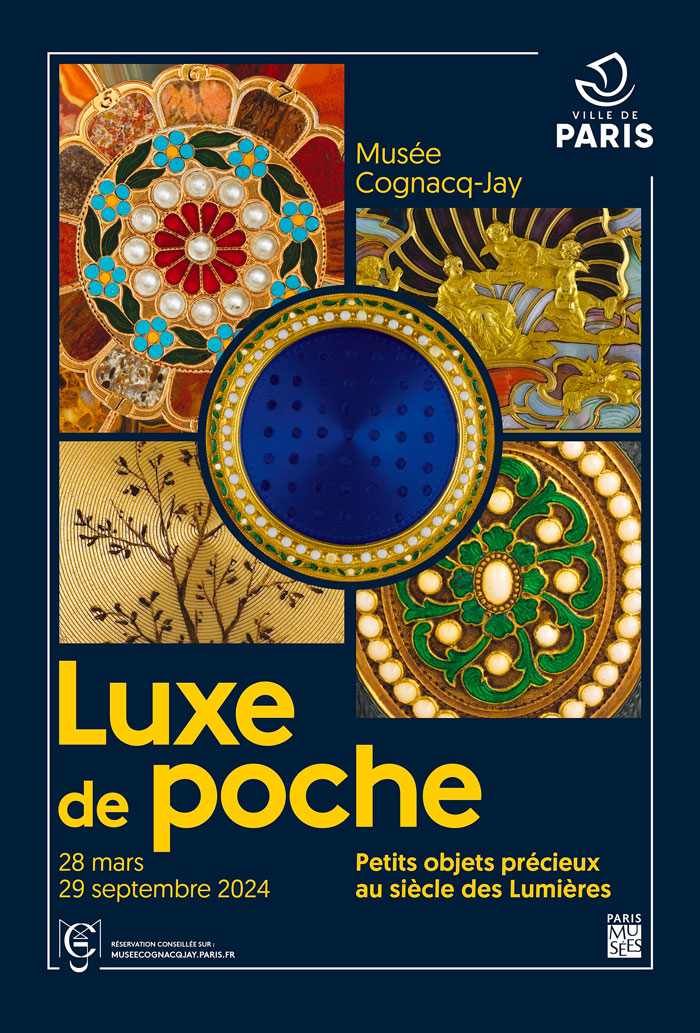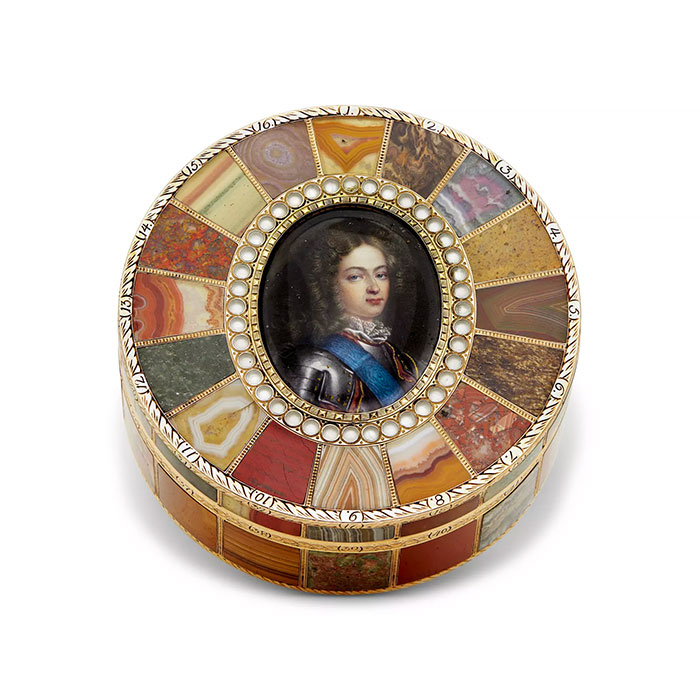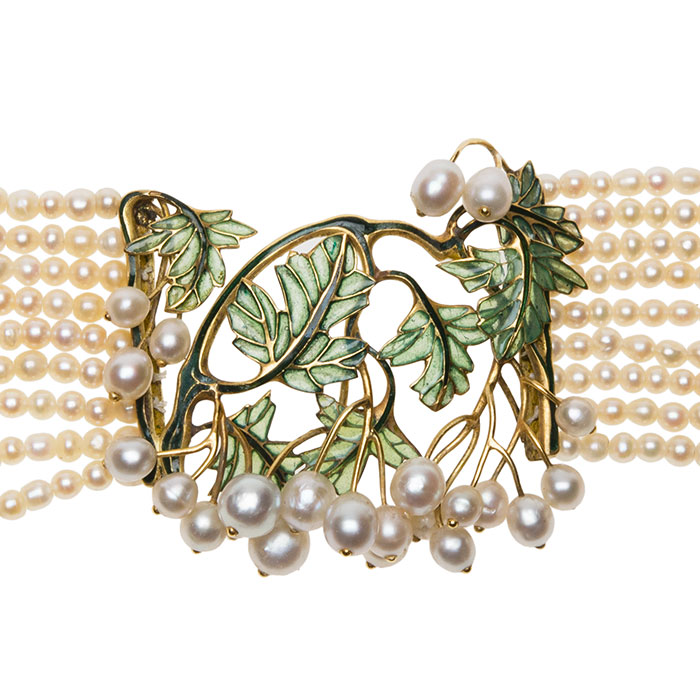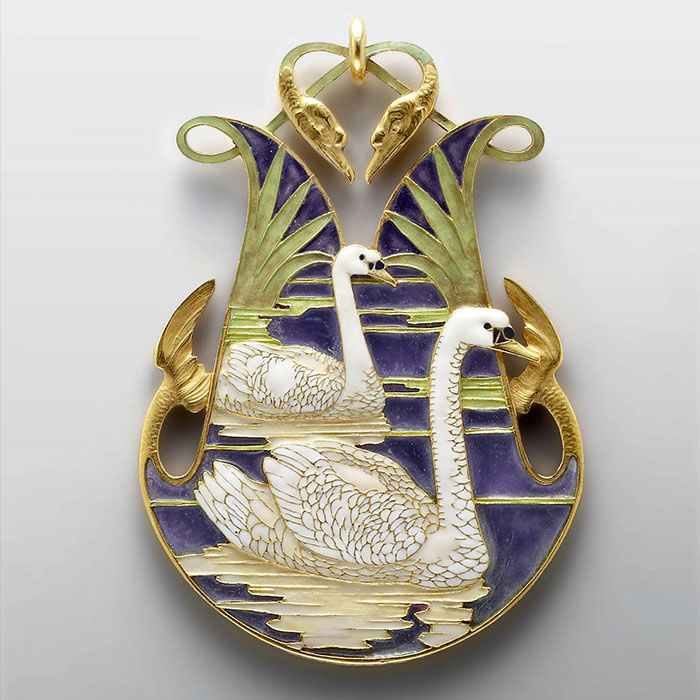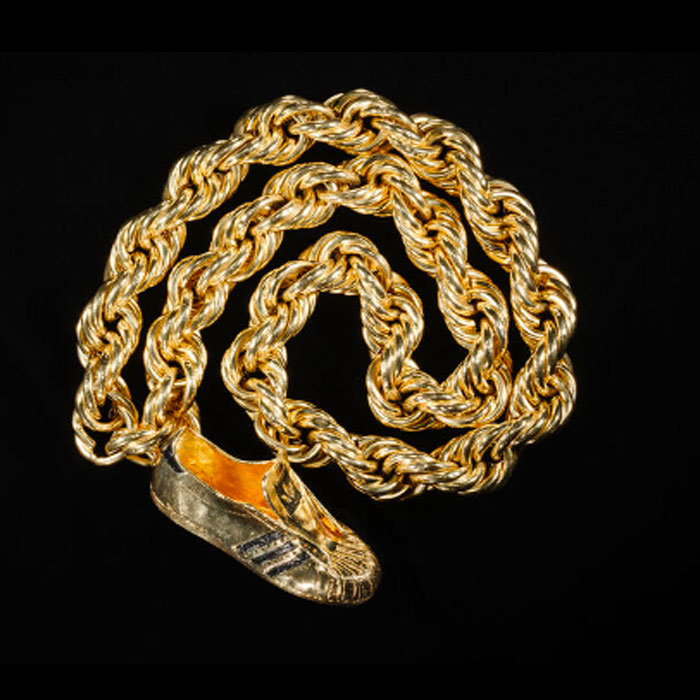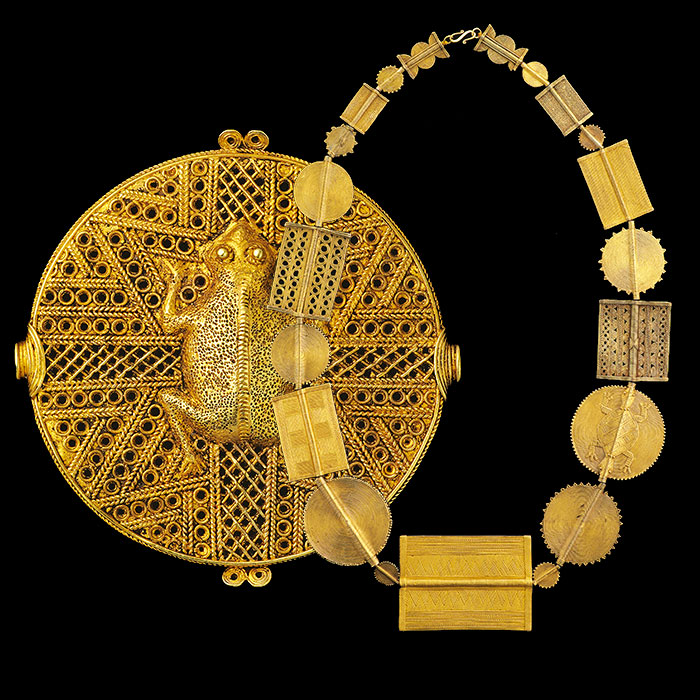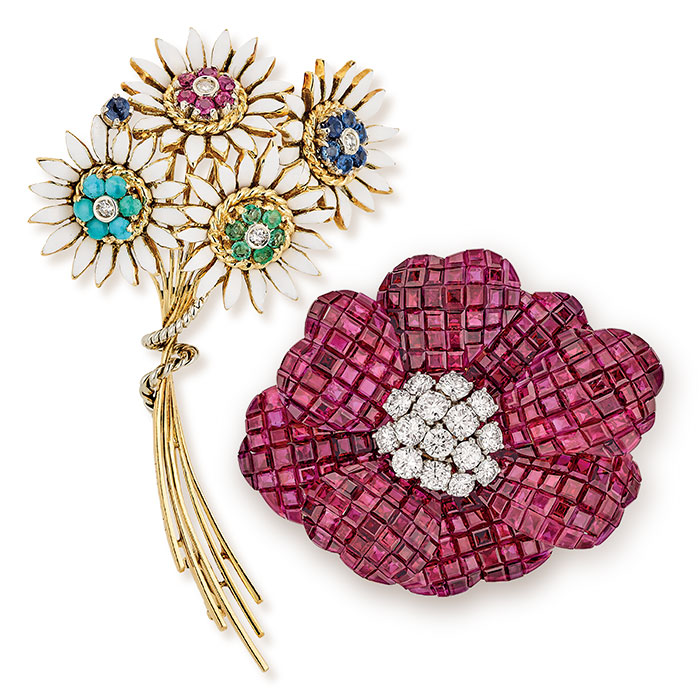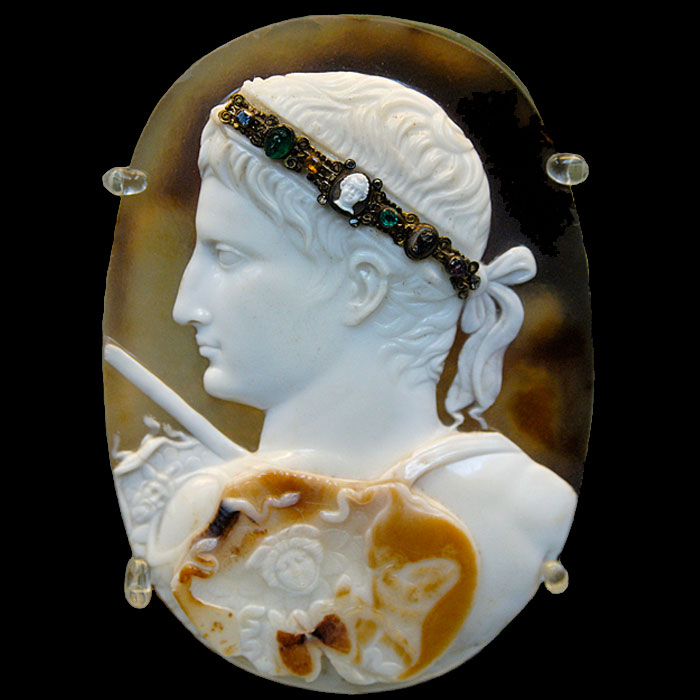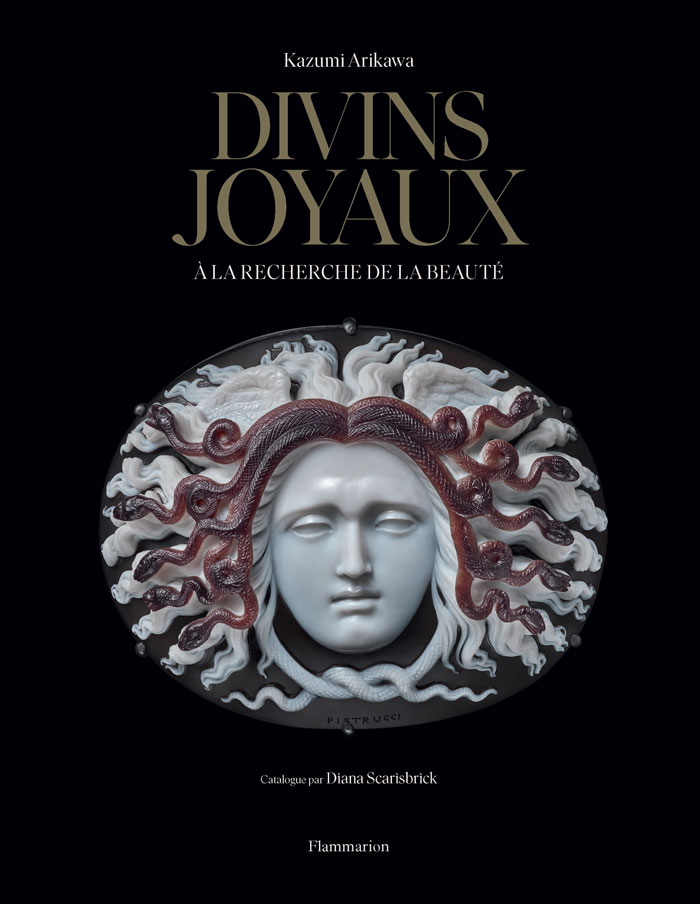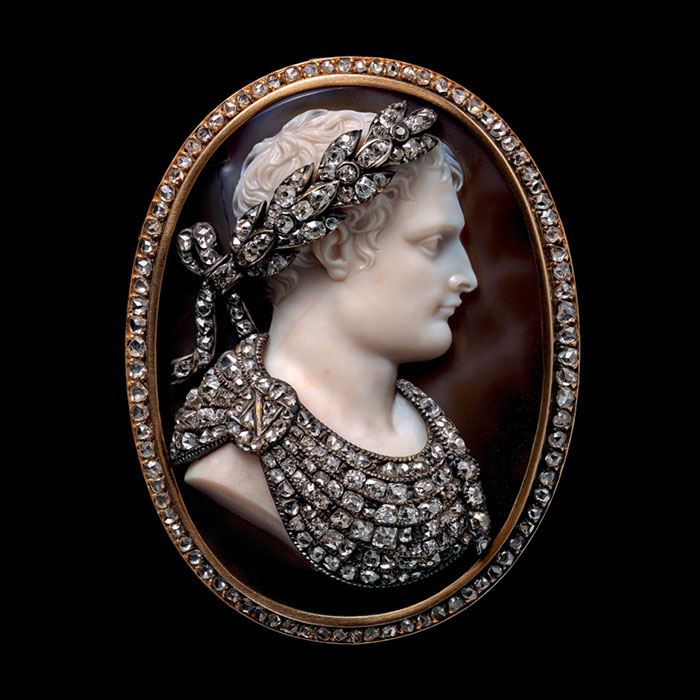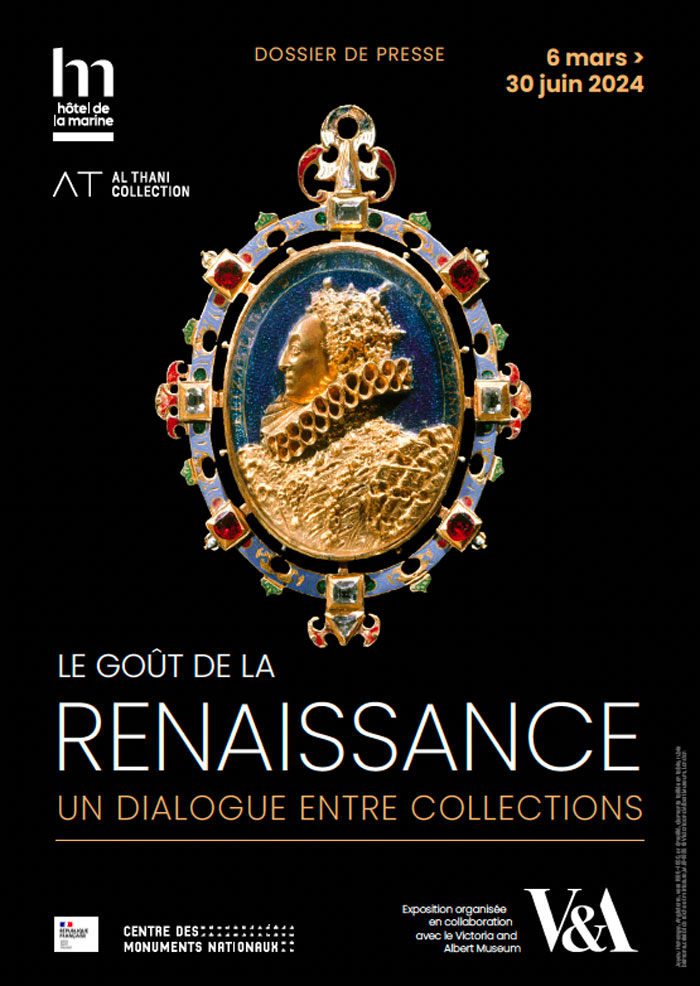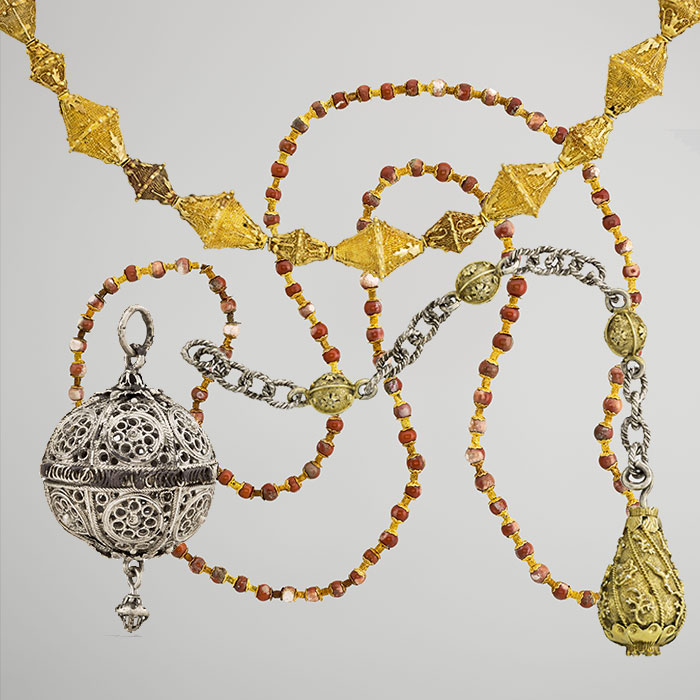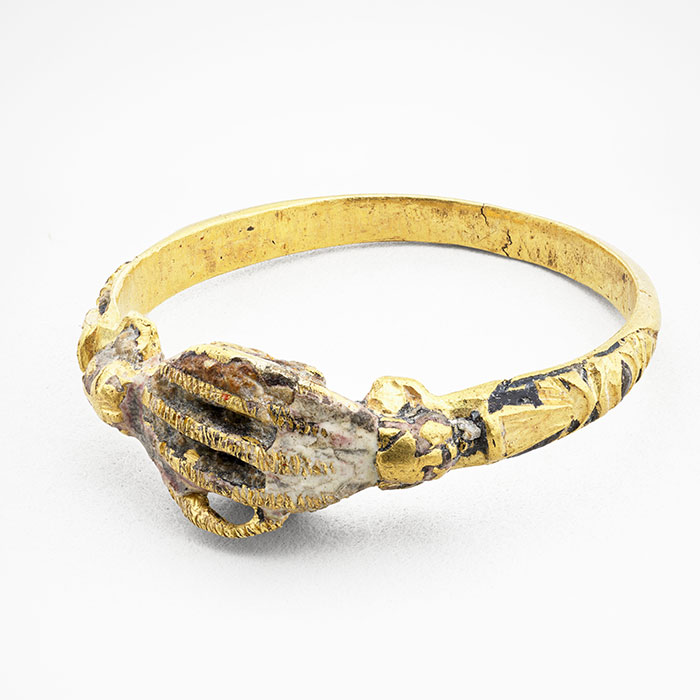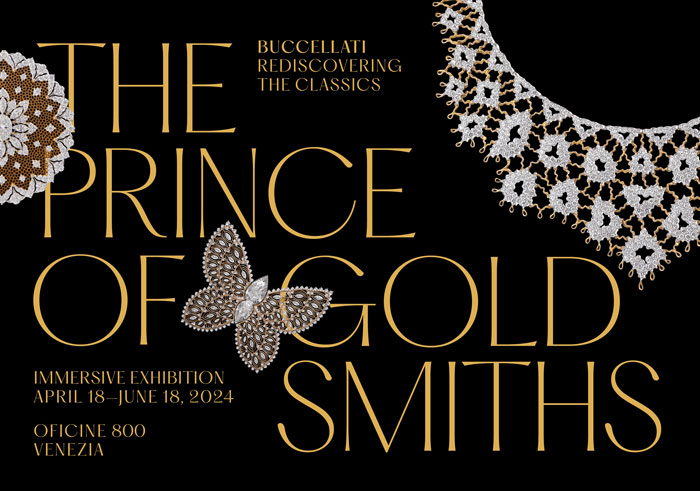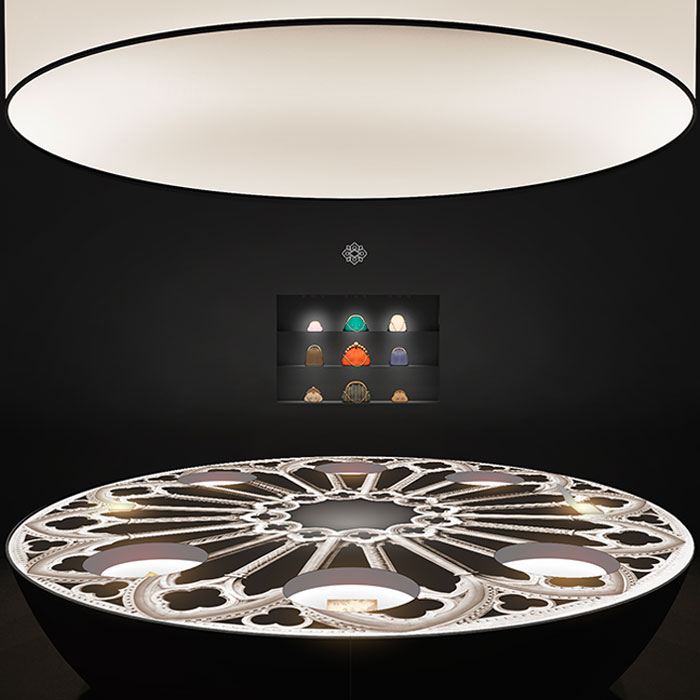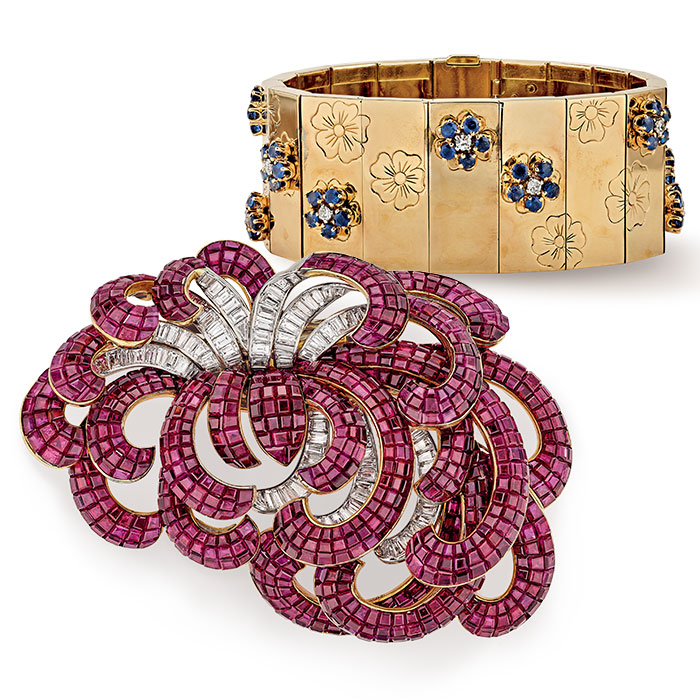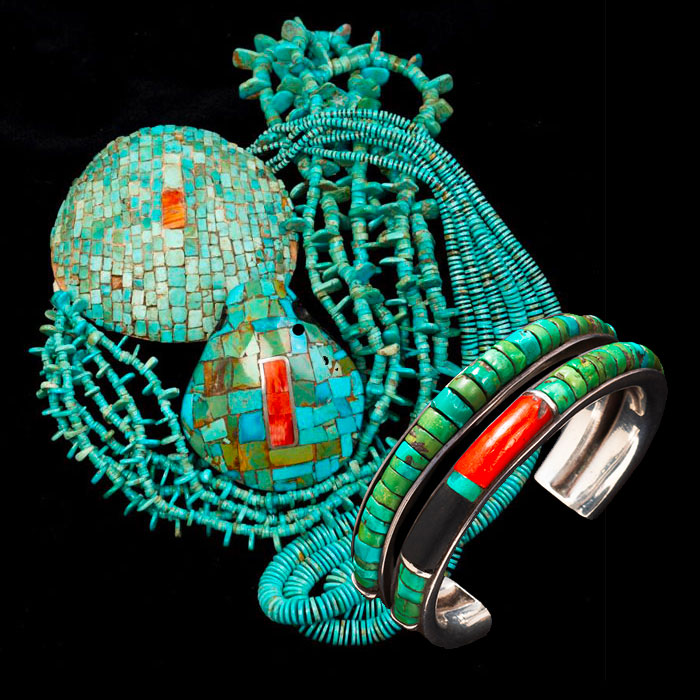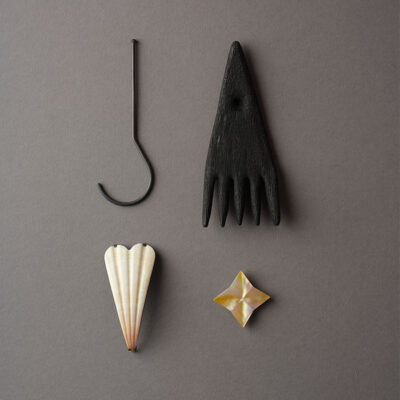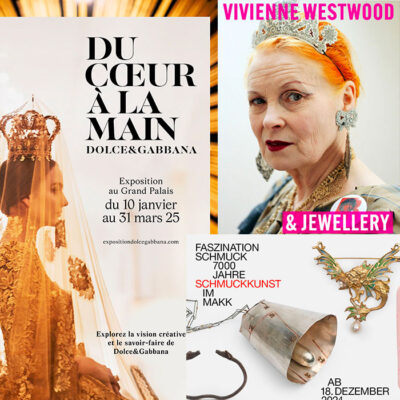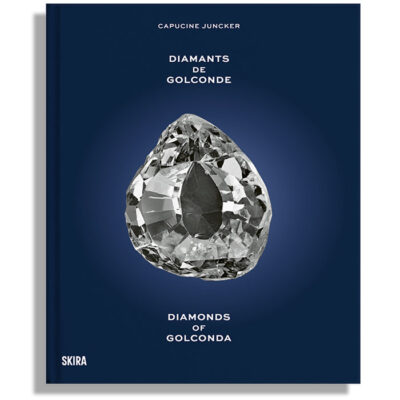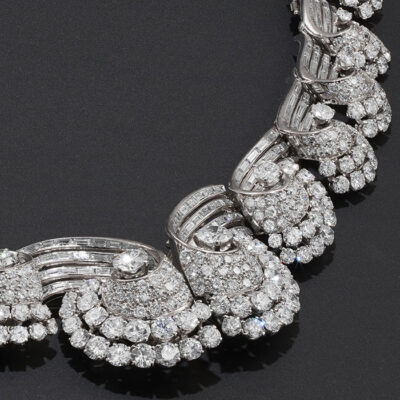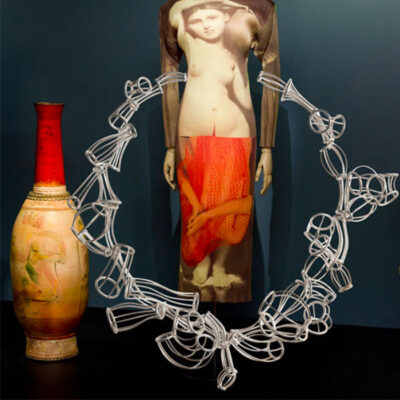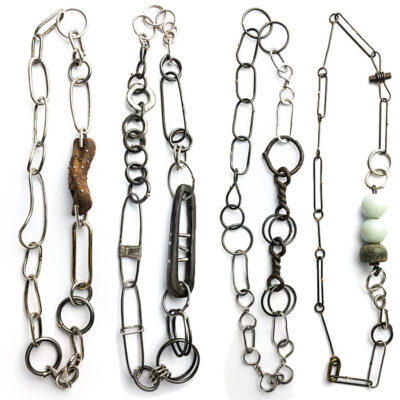My agenda
04 March 2024
Share
Must-see jewelry events in 2024
In 2024, do not miss these exhibitions. Some are entirely dedicated to jewelry, while others present only a few pieces, but for enthusiasts, they are worth a visit. Enjoy your visits.
By Sandrine Merle.
‘Paris, Capital de la Perle’, Paris
From 21 Novembre 2024 to 23 March 2025, The School of Jewelry Arts at L’Hôtel de Mercy-Argenteau
‘L’Or des Ming. Fastes et Beautés de la Chine Impériale’, Paris
As part of the Franco-Chinese Year of Cultural Tourism and the 60th anniversary of diplomatic relations between the two countries, the Musée Guimet has organized several exhibitions, including this one. In collaboration with the Qujiang Museum in Xi’an, it presents an exceptional collection of engraved, filigree and jade-inlaid gold objects made during the Ming dynasty, which spanned three centuries, from 1368 to 1644. This period, marked by the development of world trade and the rise of a wealthy elite, echoes the Italian Renaissance in full swing. The abundant aesthetics of objects, ceremonial crockery and jewels were highly codified. The exhibition gives us the codes for reading them.
September 18, 2024 – January 13, 2025, Musée Guimet
‘The Bronze Age, Fire of Change’, Leiden, Netherlands
This exhibition highlights the Bronze Age, a crucial period in prehistory, from 2000 to 800 BC. This new metal (an alloy of tin and copper), particularly resistant and shiny like gold, proved ideal for the manufacture of weapons, jewelry and tools. Combined with technological advances and the development of trade routes in Europe, its appearance contributed to the development of society and to the progress witnessed in everyday objects and extraordinary pieces. These include Schifferstadt’s golden hat (probably a religious attribute for the practice of solar worship), the sublime cast-gold cloak discovered in Wales, and six giant ceremonial swords.
National Museum of Antiquities (RMO), 18 October 2024 through 16 March 2025.
‘Parcours Bijoux Mode Design’, Paris
A hundred pieces of jewelry from the museum’s reserves are temporarily on display in the permanent collections dedicated to contemporary design. The curators of the museum’s various departments have integrated their pieces by making free associations. Jean Després’ twelve brooches and twelve rings are displayed alongside Olivier Rousteing’s body-built looks for Balmain and Marc Newson’s 80s furniture in aluminum leaf. Alfred Duraz’s silver sculpture-pieces are mixed with Alber Elbaz’s silk dresses for Lanvin and Jean Dubuffet’s oils on canvas in the Poésie de la matière room. Around vases by Portanier and Pontoppidan, we find a dress by Issey Miyaké printed with an Ingres painting and a necklace featuring this motif in silver thread. Just a few examples among thousands. To read my article, click here.
Until November 10, 2024 at the Musée des Arts Décoratifs
‘Pocket Luxury – Precious Small Objects in the Age of Enlightenment’, Paris
The starting point of this exhibition of precious and sophisticated small objects (snuffboxes, candy boxes, sugar bowls, patch or makeup boxes, writing sets, cane handles, lorgnettes…) is the collection of Ernest Cognacq. The collection is supplemented by loans from the Louvre Museum, the Victoria & Albert Museum, and the Palace of Versailles. Made of gold, enriched with gemstones, mother-of-pearl, porcelain, or translucent enamels, sometimes adorned with miniatures, they interact with accessories, clothing, furniture, engravings, etc. As they are part of both art history and fashion, techniques, and anthropology.
28 March – 24 November 2024, Cognacq-Jay Museum
‘Ice Cold: An Exhibition of Hip-Hop Jewelry’, New York
This exhibition is part of the celebrations (concerts, neighborhood tours, meetings, etc.) of the 50th anniversary of hip-hop in New York. In the Melissa and Keith Meister Gallery, dedicated to minerals and gemstones, the exhibition offers a glimpse into Hip Hop culture and the jewelry worn by its stars: heavy chains on which diamond-saturated pendants hang, signet rings, Slick Rick’s crown, Notorious B.I.G.’s gold “Jesus piece” pendant (representing the face of Jesus with the crown of thorns), the gold chain given by Adidas to each member of the run-DMC group at the time of their collaboration, Jay-Z’s diamond-set Roc-A-Fella medallion. To be discovered on a soundtrack
Until January 5, 2025, American Museum of Natural History
‘The Gold of the Akan’, Iphofen
These 300 pieces (jewelry and objects mainly dating from the 19th and 20th centuries) belong to the Liaunig Collection (Austria). Crowns, amulets, sandals, but also a throne with very geometric shapes, all testify to the brilliant craftsmanship of the Akan peoples’ goldsmiths, mainly residing in Ghana. An exploration into the fascinating culture of African peoples.
17 march – 10 November 2024, Knauf Museum
‘René Lalique, the inventor of modern jewelry’, Wingen-sur-Moder
The museum shows how “René Lalique created a new, autonomous work free from any influence”. Through nearly 100 jewels from its collection (one of the largest in the world), the museum revisits the artist’s contributions to jewelry, the architectural dimension of the pieces, and his obsession with detail. It then explores the creative process, the importance of drawing in his work, manufacturing, and the materials used. The final aspect, which curator Véronique Brumm-Schaich particularly emphasized, is showing how women wore these dog collars, belt buckles, bayadères, etc., through archival documents.
1 May – 3 November 2024, Lalique Museum
‘Divins Joyaux à la Recherche de la beauté’, Paris
I’m privileged to know Kazumi Arikama, one of the world’s leading collectors of antique jewelry. For over 40 years, he has been selecting the finest pieces from Antiquity to the 1940s: Belle Époque tiaras by Chaumet, a brooch by Georges Fouquet featuring an enamelled dragon holding an aquamarine in its mouth, René Lalique’s horn “Noisettes” comb, etc. To coincide with the publication of its book Divins Joyaux, the École des Arts Joailliers is exhibiting some 20 pieces, including a cameo brooch bearing the effigy of Napoleon I, an 18th-century Giardinetti necklace and a tiara that belonged to Countess Raggio Filippo Chiappe in the early 20th century.
You can find out more about Kazumi Arikawa and her Albion Art collection by clicking on this link.
September 19 – 26, 2024, The School of Jewelry Arts Hôtel de Mercy-Argenteau
‘Homo Faber: The Journey of Life’, Venice
This event, featuring immersive, high-quality exhibitions, highlights the skills of selected artisans from around the world. Visitors are treated to live demonstrations by bamboo weavers, paper cutters, gold embroiderers, hardstone marquetry specialists, glypticians, paper folders, textile sculptors, ceramists, glass blowers and more. This year, artistic direction has been entrusted to director and interior designer Luca Guadagnino and architect Nicolò Rosmarini.
September 1-30, 2024, Venise – Giorgio Cini Foundation on the island of San Giorgio Maggiore
‘A walk through a jewelry garden’, Paris
50 precious jewels and objects from the Van Cleef & Arpels heritage collection celebrate one of the company’s major inspirations: flora. Pieces dating from the 1930s to the early 2000s bear witness to the many representations of the daisy, and the techniques used to sublimate it, such as the mysterious setting for the petals of a poppy clip, or the way this flora dialogues with fauna in a bird clip.
From June 21, 2024 to January 13, 2025, Van Cleef and Arpels boutique – The Galerie du Patrimoine
‘Rediscovering Gems’, London
Every cloud has a silver lining… The idea of this exhibition around engraved stones arose from the theft in 2023 of 2,000 objects from the British Museum. Some have been recovered, including 10 of the intaglios presented here. The collection consists of items from Charles Townley’s collection acquired during his Grand Tour in the 18th century. Not to be missed: the Blacas Cameo, one of the most famous ancient cameos, displayed on a light table. This concept helps to fully appreciate the skill of the engraver, and how they worked the layers of sardonyx to depict Augustus.
Until 2 June 2024, The British Museum
‘The Taste of the Renaissance’, Paris
This second exhibition by the Al Thani Collection in collaboration with the Victoria & Albert Museum brings together 130 pieces from their respective collections (the V&A’s being one of the largest in the world). It highlights the connections between continents, the influence of Antiquity, the emergence of great collectors, etc. Among paintings, manuscripts, textiles, this Parisian exhibition presents magnificent finely crafted jewels, mainly pendants including the enamel portrait of Elizabeth I.
6 March – 30 June 2024, Hôtel de la Marine
‘The Scepter & the Spindle – Being a Woman between the Middle Ages and the Renaissance’, Tours
Enter the world of princesses, nobles, bourgeois, merchants, and peasants, with power or at work, real or imaginary, who lived between the late Middle Ages and the Renaissance. This exhibition is not dedicated to jewelry, but among more than a hundred works is a magnificent Renaissance ensemble loaned by the Museum of Écouen. “All, with the exception of the double wedding ring (retrieved from the Seine in 1863), originate from an archaeological treasure discovered in Amiens in the 19th century. They date back to the late 16th century and likely belonged to members of a prosperous bourgeois milieu,” explains Elsa Gomez, Curator of the Antiquity, Middle Ages, and Renaissance collections at the museum. One can also admire jewelry depicted in paintings loaned by institutions such as the Louvre.
8 March – 17 June 2024, Museum of Fine Arts
‘Buccellati, The prince of Goldsmiths’, Venice
“Buccellati, The Prince of Goldsmiths”, Venice This retrospective exhibition traces the 100 years of the Italian house, now owned by the Richemont Group. It unveils the three generations that have built this magnificent history, revealing exquisite silverware pieces showcasing the art of chiseling techniques, and of course, jewelry. Mosaico pendants, butterfly brooches, cuffs, and more: all the great classics in gold crafted like fabrics (tulle, velvet, linen) are on display. A delight.
April 18th – June 18th 2024, Fondamenta S. Biagio
‘Ancient—Modern: Continuity and Innovation in Southwest Native Jewelry’, Tucson
All the jewelry, mainly made of shells, silver, and turquoise, comes from the collections of the Arizona State Museum. In addition to their profound spiritual significance, the exhibition explores the evolution of aesthetics, especially from the 1920s onwards, due to the establishment of some trade fairs aimed at promoting this jewelry abroad. The exhibition also showcases the magnificent reinterpretation work of artists from the mid-20th century onwards, such as Charles Loloma, Kenneth Begay, and Preston Monongye.
Until June 2024, Arizona State Museum
‘Van Cleef & Arpels and Japan: An Artistic Encounter’, Paris
With 30 pieces from its heritage collection and archival documents, Van Cleef & Arpels showcases Japanese inspirations dating back to the 1920s. The house illustrates these connections with the Land of the Rising Sun through the sumptuous Chrysanthemum brooch, the country’s emblematic flower, set mysteriously with rubies and diamonds. This is complemented by necessities and cigarette cases in lacquer from the 1920s-30s inspired by inro (boxes that men wear on their obi) and contemporary pieces such as butterfly clips decorated by master lacquer artist Hakose San.
Until 15 June 2024, Van Cleef & Arpels boutique – Galerie du Patrimoine
‘100 Carats: Icons of the Gem World’, Los Angeles
The Natural History Museum of Los Angeles and jeweler Robert Procop have brought together 24 unset gemstones. Not one weighs less than 100 carats… From the smallest to the largest, there’s “The Miracle,” a 100.06-carat sapphire, “The Scarlet Red,” a 112.68-carat rubellite, or “The Crown of Colombia,” a 241.04-carat emerald. The centerpiece, with “only” 125.35 carats, is the Jonker I. This diamond, one of the largest cut stones in the world, is also the largest cut stone from the Jonker, the fourth-largest diamond in the world when it was discovered in 1934. No one had seen it since it was sold to a private individual in 1977.
Until April 21, 2024, Natural History Museum’s Gem and Mineral Hall


